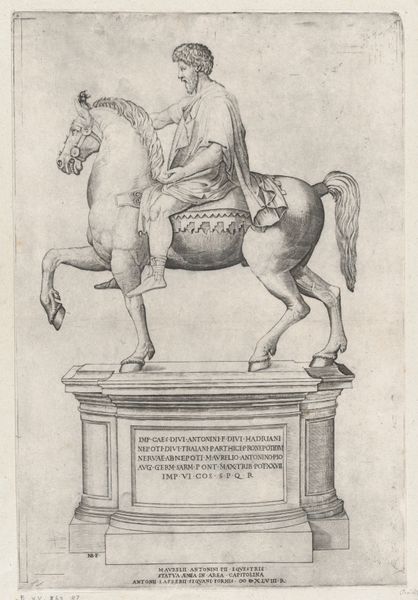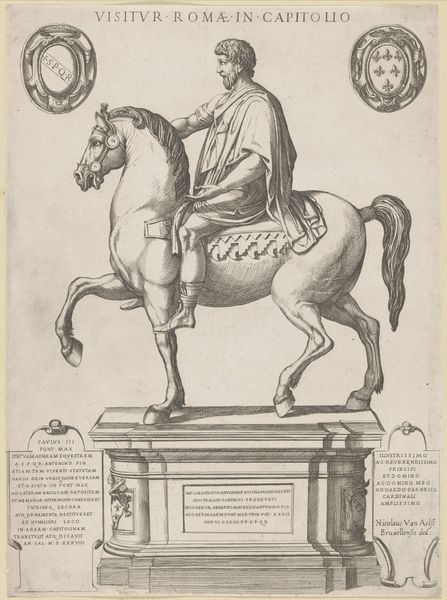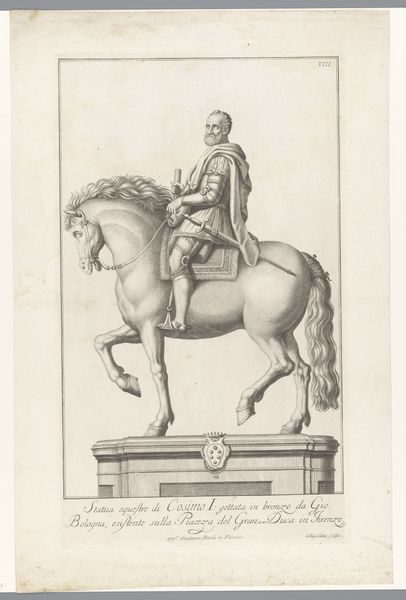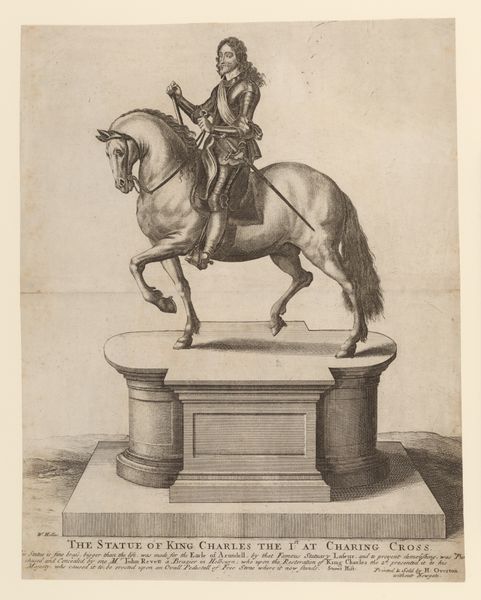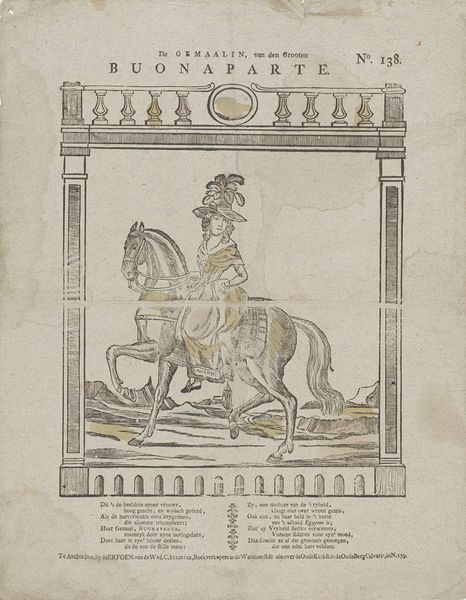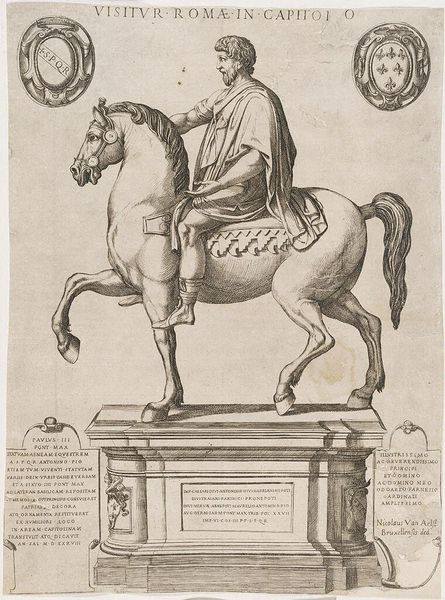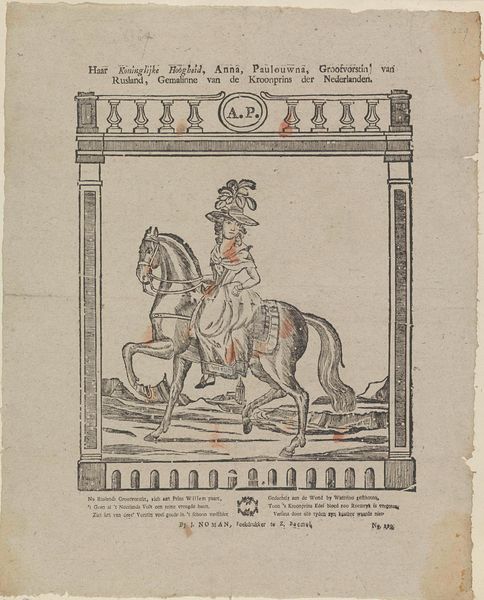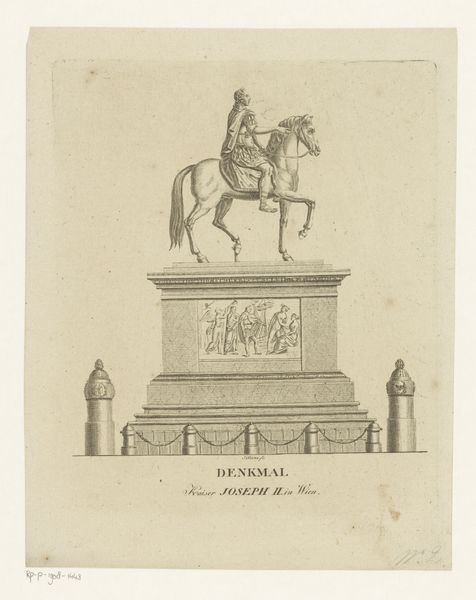
Speculum Romanae Magnificentiae: Marcus Aurelius 1530 - 1580
0:00
0:00
drawing, print, engraving
#
portrait
#
drawing
# print
#
classical-realism
#
figuration
#
11_renaissance
#
history-painting
#
italian-renaissance
#
engraving
Dimensions: sheet: 18 5/16 x 11 in. (46.5 x 28 cm) plate: 14 7/16 x 9 13/16 in. (36.7 x 25 cm) trimmed on the left-hand side
Copyright: Public Domain
This engraving by Cornelis Bos captures the equestrian statue of Marcus Aurelius. The emperor, mounted on his steed, extends his hand in a gesture that speaks of command. Notice how this motif, the ruler on horseback, appears throughout history, echoing in the equestrian statues of Roman emperors and Renaissance condottieri alike. Yet, the meaning subtly shifts. In Rome, it symbolized imperial power, evoking the vast reach and authority of the empire. Later, during the Renaissance, it reappears, embodying the ideals of leadership, wisdom, and justice. Consider the psychological weight of such images: the horse, a symbol of untamed power, now bridled and directed by human intellect, a powerful force engaging viewers on a deep, subconscious level, expressing control. Thus, this symbol follows a cyclical progression, resurfacing, evolving, and taking on new meanings as it journeys through time.
Comments
No comments
Be the first to comment and join the conversation on the ultimate creative platform.
